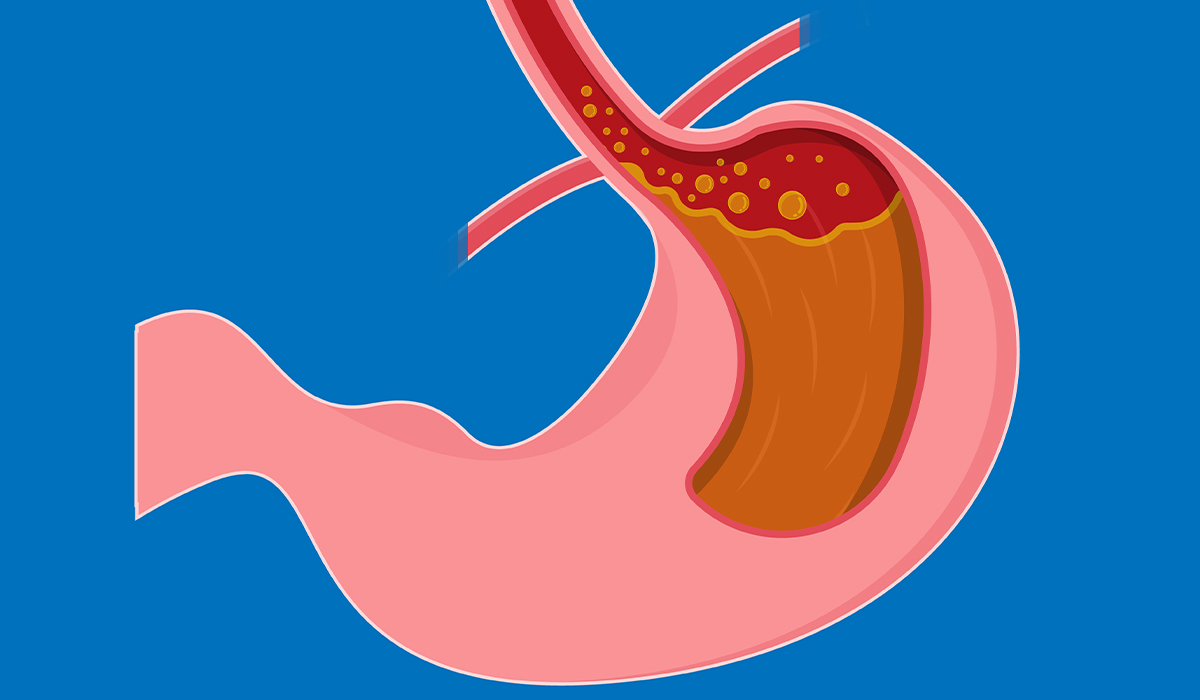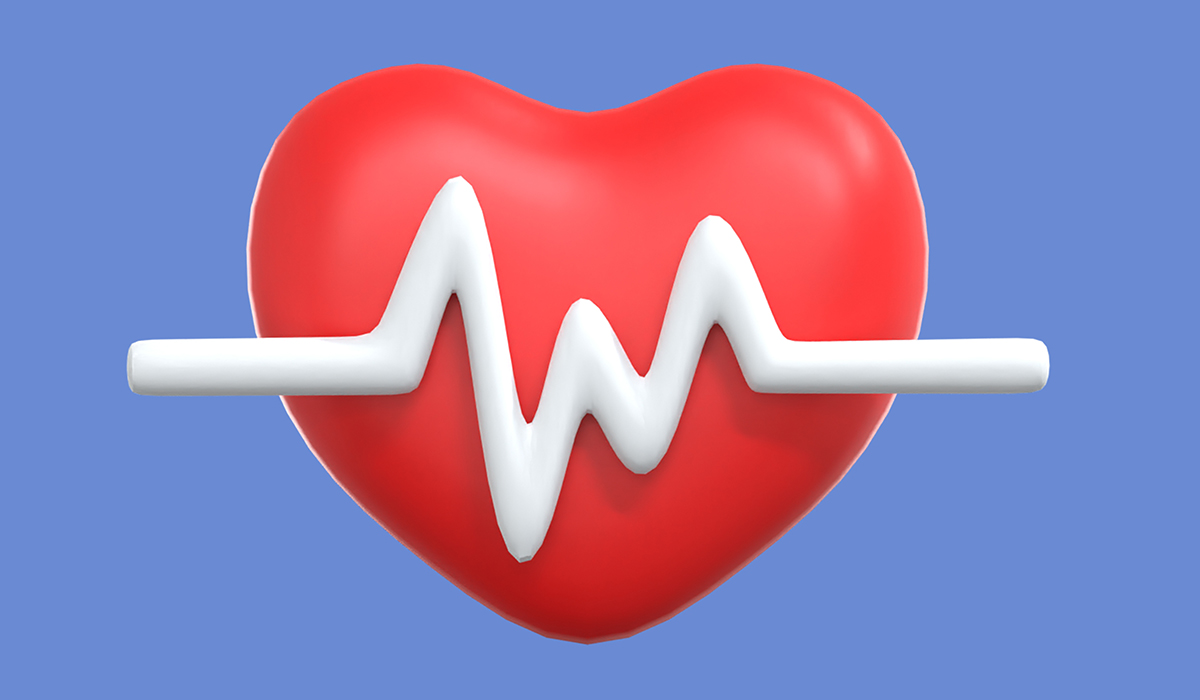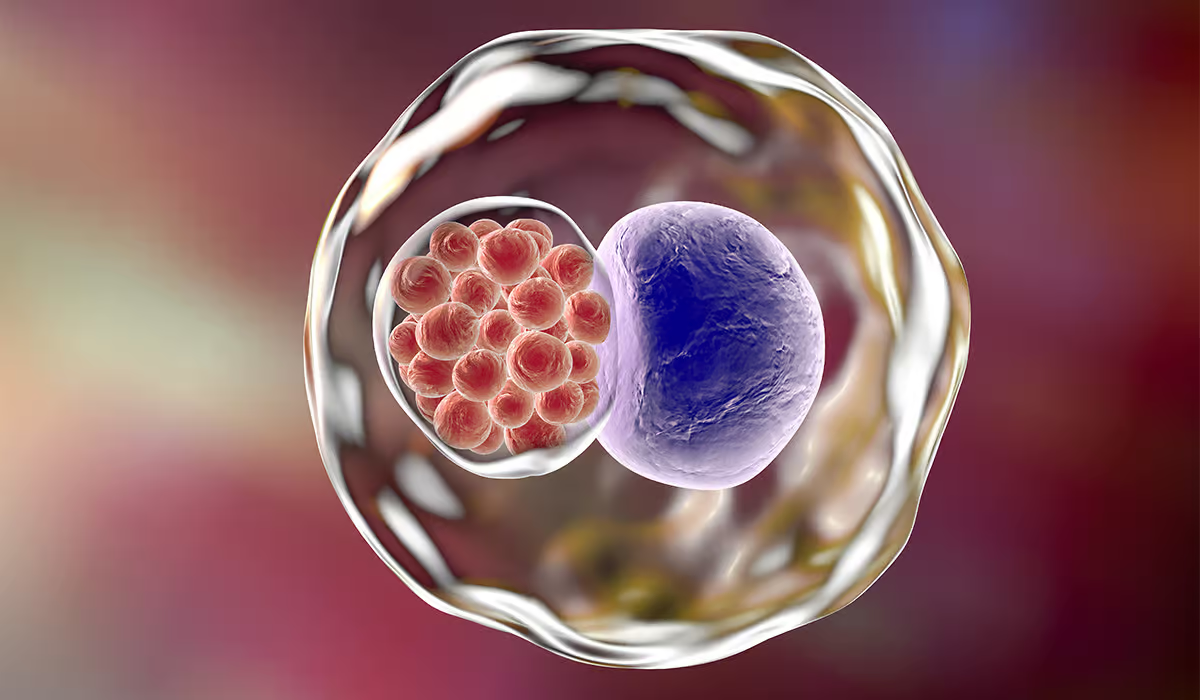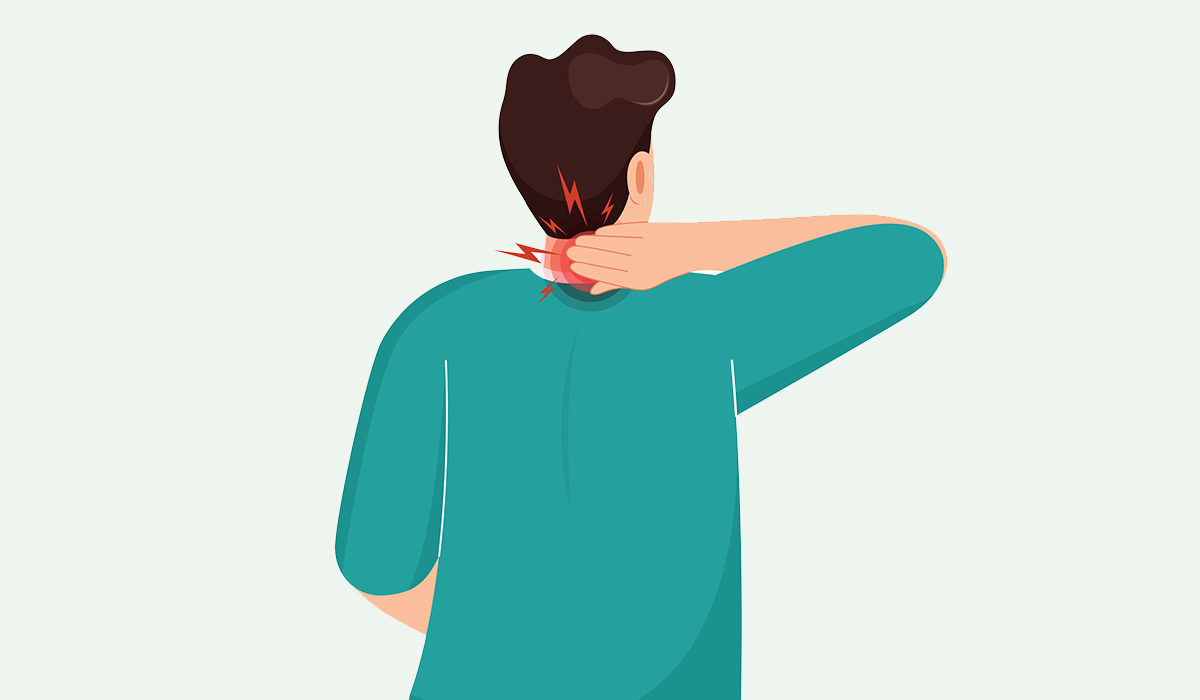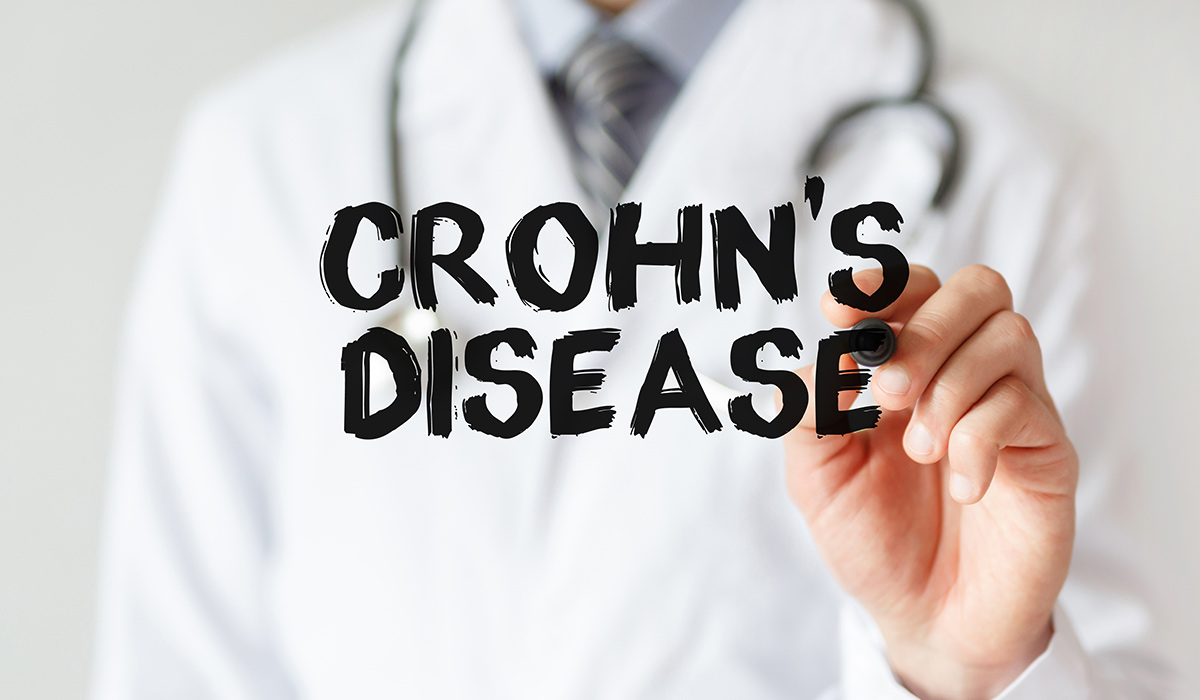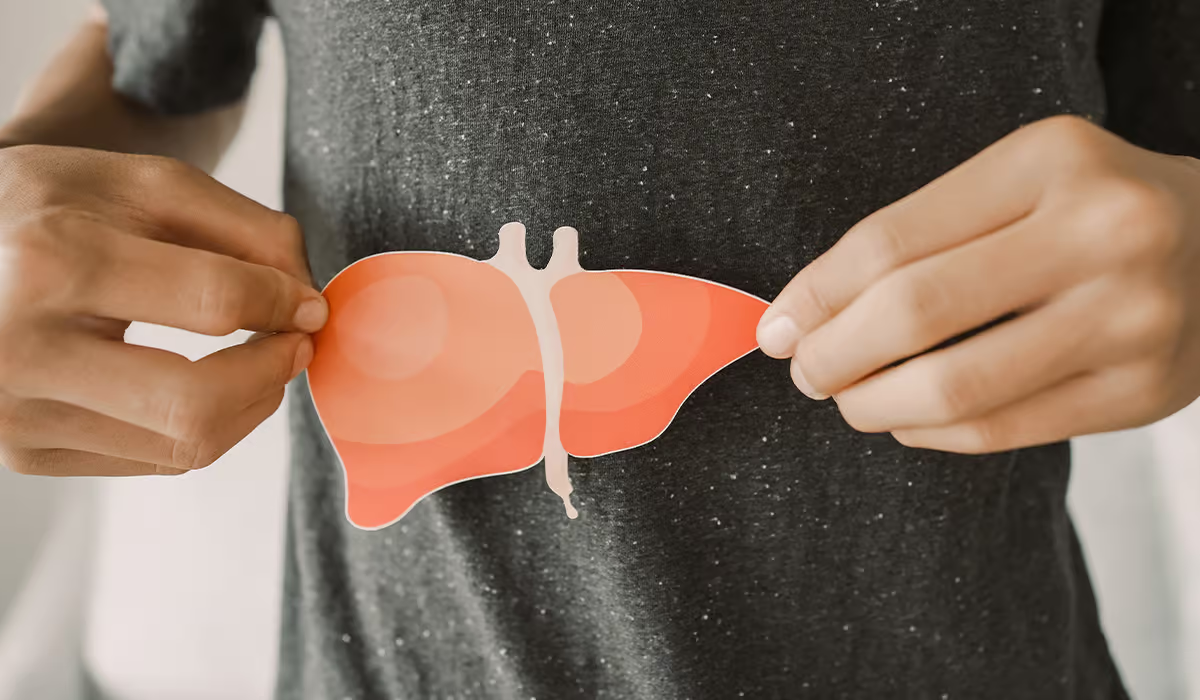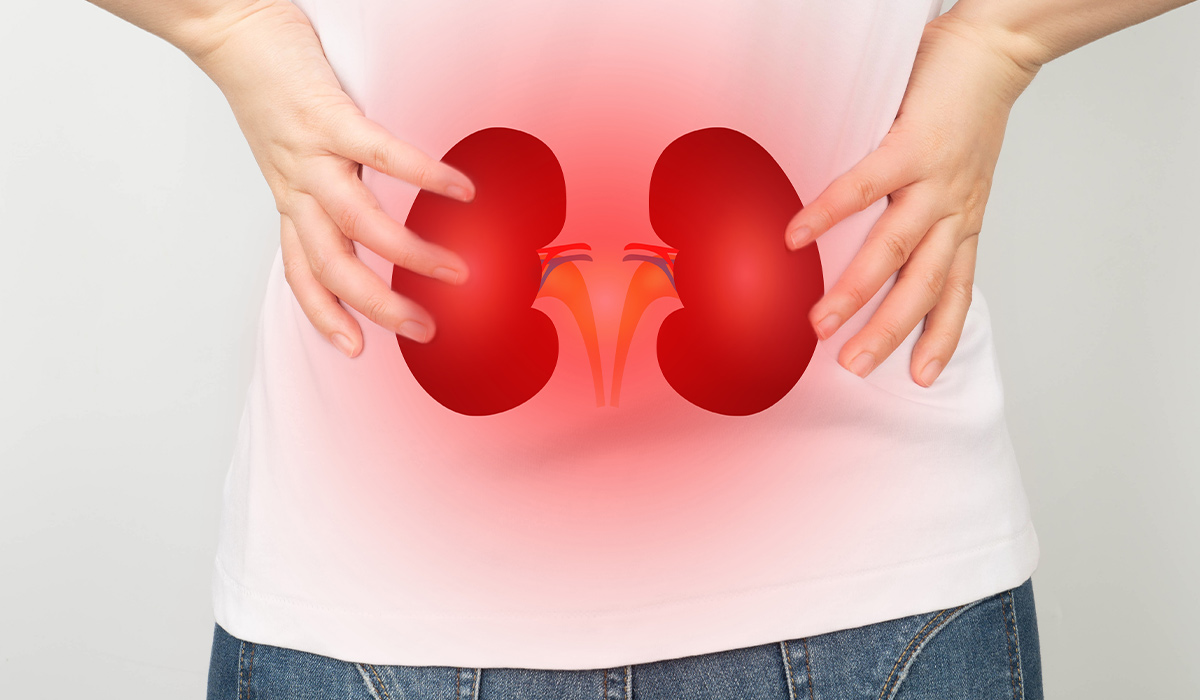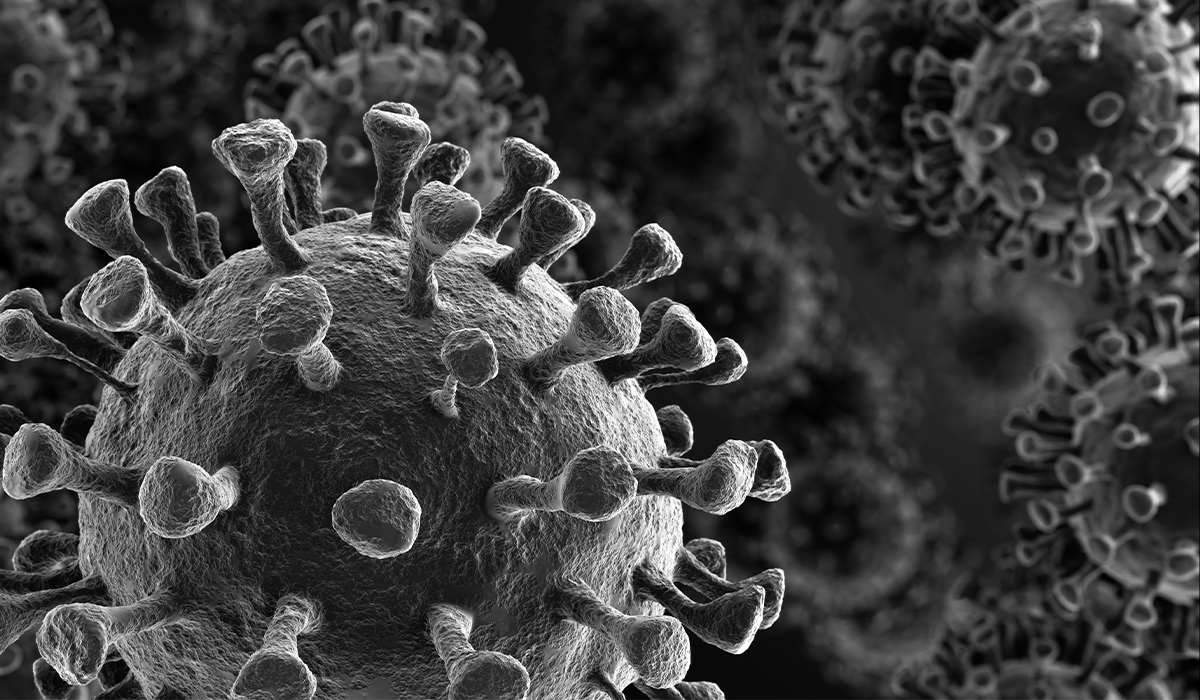When HIV enters the human body, it attacks immune system cells – CD4 T lymphocytes, a type of white blood cell. It leads to a gradual decrease of those infection-fighting cells, making the immune system unable to fight diseases.
Doctors identify AIDS when the CD4 cell count drops below 200 cells per cubic millimeter (200 cells/mm3) or when the characteristic opportunistic infections and cancers occur. Opportunistic diseases are illnesses that happen to people with damaged immune systems and are absent or much less severe in people with healthy immune systems.
Causes
The cause of AIDS is HIV, or human immunodeficiency virus, which attacks primarily immune system cells – white blood cells (CD4 T cells, monocytes, macrophages) found in the blood, bone marrow, gastrointestinal tract, and central nervous system.
The course of infection is determined by factors that depend on the host (genetic factors), the type of virus, the way of getting infected, and which white blood cells are the first to become infected.
The progression of the disease leads to a constant decrease in the number of white blood cells and intensified multiplication of the virus. Usually, acquired immunodeficiency syndrome (AIDS) develops 8–10 years after infection, but this time may vary from 1 to many years.
The characteristic feature based on which AIDS is diagnosed is the occurrence of a specific opportunistic disease in an infected person. AIDS is a state of increased susceptibility of the body to any pathogenic factors and an increased risk of developing cancer. Pathogenic factors that cause opportunistic diseases do not cause disease symptoms in a person with a normal immune system function. Still, in a state of impaired immunity, such as AIDS, they cause severe, life-threatening diseases.
There are two types of human immunodeficiency virus – HIV-1 and HIV-2. HIV-1 infections are the most common and affect people all over the world, while HIV-2 is endemic in Africa, with single cases detected in Europe and the USA.
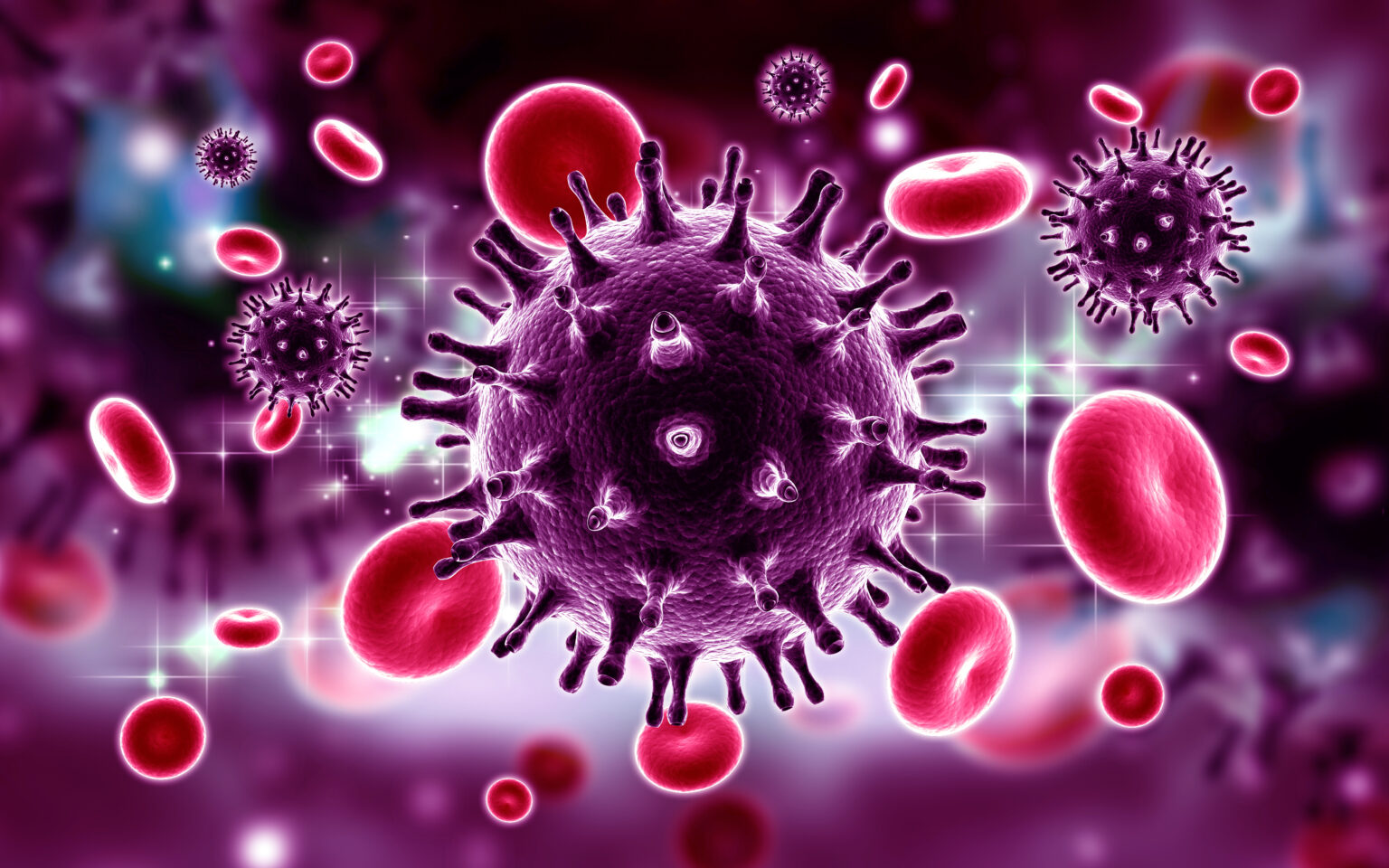
Transmission
HIV infection, the virus that causes AIDS, is transmitted:
- By Blood
- As a result of sexual contact
- Vertically from mother to child during pregnancy or childbirth and breastfeeding.
HIV infection can occur through contact with infected blood, semen, vaginal discharge, and human milk.
Transmission of the virus through blood mainly involves the use of intravenous drugs (contaminated drugs, contaminated needles, and syringes). Still, it is also risky to get a tattoo or piercing in an unprofessional salon.
HIV is sensitive to disinfection methods. Therefore, single-use medical equipment and sterilization methods in hospitals prevent hospital infections with this virus. Currently, every blood donation is screened for the presence of HIV types 1 and 2 in the United States to ensure it is safe.
Can You Get AIDS From Kissing?
Generally, you can’t get AIDS from kissing since HIV is not found in the spit. However, if someone has an open sore inside their mouth or bleeding gums, there is a chance of getting HIV. HIV can only survive inside the human body, so it cannot survive long, for example, on surfaces. You can’t get infected with HIV by:
- Mosquito bite
- Saliva and spit
- Sweat
- Shaking hands, sharing dishes, or sharing a toilet with someone HIV positive
- Hugging
- Through the air
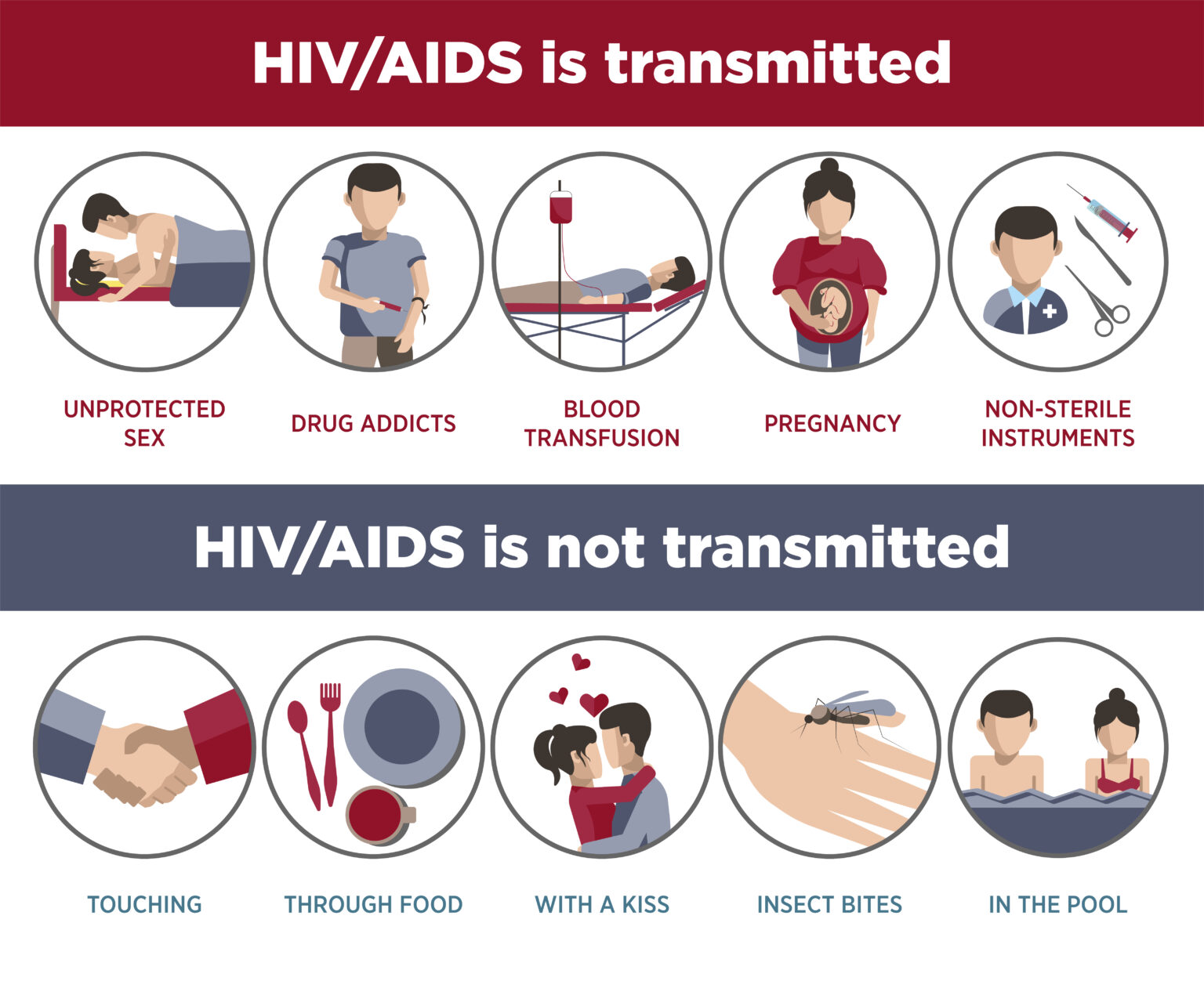
How Common Is It?
HIV is one of the most dangerous viruses transmitted sexually, through blood, and perinatally (from mother to child). It is estimated that since the beginning of the epidemic, approximately 80 million people around the world have been infected with HIV, and 40 million have died of AIDS.
It is estimated that in 2022, 39 million people will be living with HIV and AIDS in the world. Globally, approximately 0.7% of people aged 15-49 are infected with HIV. This percentage varies in different parts of the world: the highest is in Africa (1 in 20 people are infected with HIV), Asia, and Russia.
Every year, 1.5–2 million people become infected with HIV. Up to 1 million people die from AIDS every year. 76% of people with AIDS were accessing antiretroviral treatment in 2022, and this percentage is still growing. The number of new infections and the number of deaths due to AIDS are constantly but slowly decreasing.
Symptoms
There are several clinical stages in the course of HIV infection. At first, the infection doesn’t show any signs or only shows a few, making it hard to figure out the disease early on. When you get this virus, you might initially start to feel symptoms similar to the flu. These may include:
- Fever
- Fatigue
- Sore throat
- Chills
- Night sweats
- Rash
- Muscle aches
- Mouth ulcers
- Swollen lymph nodes
Those symptoms may last up to several weeks.
Stages
After getting infected, these are the usual steps that happen:
- Acute HIV infection
- Chronic HIV infection
- Acquired immunodeficiency syndrome (AIDS)
Acute HIV Infection
Acute retroviral disease develops in most infected people within 2–4 weeks after exposure to the virus. Symptoms appear suddenly and last for about two weeks. The virus is then attacking infection-fighting white blood cells – CD4 T lymphocytes.
Acute retroviral disease most often presents with fever, nausea, muscle pain, rash, headaches, sore throat, enlarged lymph nodes, abdominal pain with diarrhea, and loss of appetite.
Symptoms do not occur in all infected people. Few symptoms may result in ignoring them and not taking an HIV test. Acute HIV infection may also be asymptomatic, which, in the absence of awareness of risky behavior, causes the disease to be detected late, at an advanced stage.
During this stage of the disease, patients have a very high number of copies of the virus in their blood, so their body fluids containing the virus (blood, semen, vaginal discharge, milk) are highly infectious.
Chronic HIV Infection
During the chronic HIV infection stage, the virus slowly continues to multiply inside the human body. This phase is also called asymptomatic HIV infection because there are no symptoms present during this stage. Usually, without treatment after ten years or longer of chronic infection, AIDS develops, but it can happen much faster in some people.
In people who regularly take antiretroviral therapy as prescribed, this stage can last several decades. It is important to remember, though, that an HIV-positive person can still spread the virus when the symptoms are absent.
Acquired immunodeficiency syndrome
When the virus destroys the immune system almost wholly, AIDS, the final stage, occurs. During that stage, the inefficient immune system can’t fight off the infections that pose no threat to people with well-working immune systems (opportunistic infections). The doctors diagnose AIDS when the CD4 cell count drops below 200 cells/mm3 or when the person acquires an opportunistic infection.
During AIDS, the virus count in bodily fluids is very high, and it is easy to transmit the disease to others. Without treatment, people with full-blown AIDS survive up to 3 years.
AIDS-defining Illnesses
AIDS-defining conditions are opportunistic diseases, some cancers that are usually caused by viruses, and certain neurological conditions. Opportunistic infections develop in people with weak immune systems that are not present in people with healthy immune systems or are much less severe in them. AIDS-defining illnesses include:
- Multiple bacterial infections
- Recurrent pneumonia
- Kaposi sarcoma – a type of cancer that grows in the lining of blood vessels and forms lesions on the skin.
- Candidiasis (yeast infections) in the mouth, throat, and esophagus
- Burkitt lymphoma
- HIV encephalopathy (brain malfunction)
- Invasive cervical cancer
- Cytomegalovirus
- Loss of vision due to CMV infection
- Herpes simplex ulcers for more than a month
- Chronic intestinal cystoisosporiasis (caused by a parasite)
- Histoplasmosis outside of the lungs
- Brain lymphoma
- Tuberculosis
Risk Factors
Some risky behaviors put a person at risk of getting infected with HIV. The risk factors include:
- Having unprotected sex
- Having sexually transmitted diseases, such as syphilis, chlamydia, or gonorrhea
- Injecting drugs or anabolic steroids using shared needles and syringes, as well as taking drugs intranasally using a shared banknote or straw
- Getting a piercing or tattoo at an unprofessional studio
- Among healthcare workers getting infected needle stick by an accident
Diagnosis
AIDS is diagnosed based on a test of CD4 T lymphocyte count. If it is below 200 cells/mm3, it indicates AIDS development. HIV, on the other hand, is diagnosed through a blood test that detects HIV antigens(patches of the virus), antibodies made by the immune system in response to the virus’s presence, or the virus itself.
There are several types of HIV tests; none of them, however, can detect the virus right after the infection. The doctor decides the kind of test and the period in which it should be performed.
Antibody Test
During an antibody test, an individual’s blood is drawn and tested for antibodies, the proteins produced by an immune system after contact with a virus. It is also possible to do this test yourself at home, using rapid tests. However, spit or blood from a finger prick is then used, which can detect an infection later than from vein blood.
Antigen/antibody Test
The antigen/antibody test looks for HIV antigens and antibodies against the virus at the same time. It can detect the disease 18-45 days after exposure. Antigens are parts of the virus circulating in the blood, activating the immune system. In AIDS, the antigens that are looked for during the test are called p24. It is usually performed as a lab test.
NATs
In nucleic acid tests (NATs), an actual virus is detected. It can detect infection earlier than other tests (10-33 days after exposure). This test is used in people who have had recent exposure to the virus and experience early symptoms of HIV.
A diagnostic challenge in the early phase of HIV infection is the so-called window period. This is the period immediately after HIV infection, during which tests for the virus remain negative due to no or low levels of antibodies or the HIV p24 antigen.
The window period for tests detecting antibodies from fingerstick blood is 18-90 days after exposure. In the case of tests detecting antibodies in blood from a vein, this period is 18-45 days.
If a person is potentially exposed to HIV infection and tests too early, the result will be negative despite the existing infection.
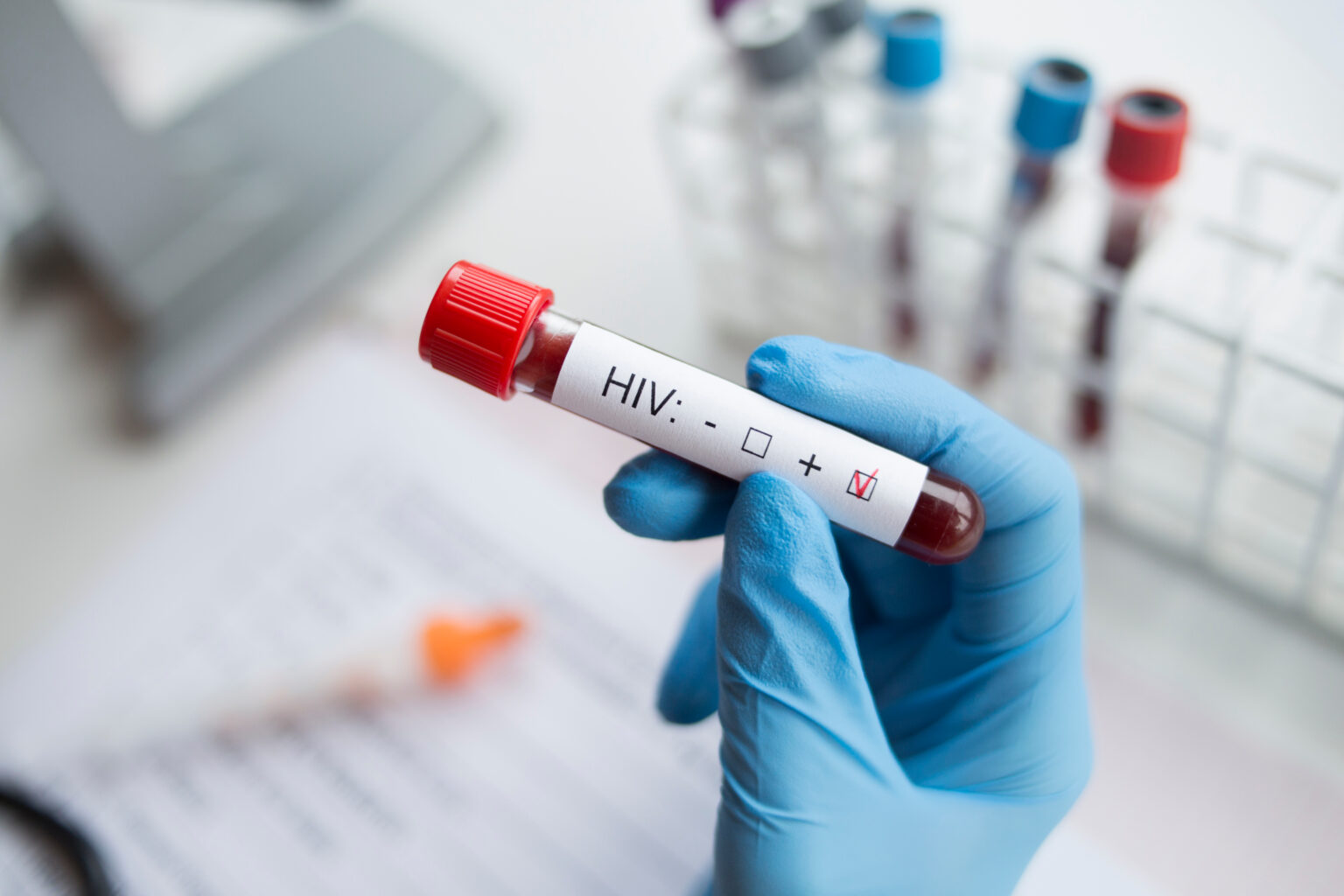
Treatment
AIDS treatment consists of two parts: inhibiting the multiplication of HIV and treating opportunistic diseases caused by impaired functioning of the immune system.
HIV infection is treated by taking antiretroviral therapy (ART), the several medications taken daily to stop the virus from multiplying and weakening your immune system, and lower the virus load in the blood to an undetectable amount. It usually consists of a combination of drugs, which makes it more effective.
The groups of drugs used in antiretroviral therapy are:
- Reverse transcriptase inhibitors
- Protease inhibitors
- Integrase inhibitors
- Entry inhibitors
- Fusion inhibitors
In the case of a low CD4 lymphocyte count, the doctor may additionally suggest pharmacological prevention of the development of certain opportunistic infections. If other diseases coexist, appropriate specialist treatment is necessary.
Can AIDS Be Cured?
Currently, AIDS medications do not completely cure an HIV infection. The goal of antiviral therapy is to stop virus multiplication, prevent opportunistic disease development, improve the quality of life of people with HIV, slow down disease progression, and prolong their lives as much as possible. Nowadays, the estimated life expectancy of HIV-positive people who start treatment early is the same as for uninfected people. Untreated HIV infection leads to AIDS and death within ten years of getting infected.
Experts sometimes use the term “functional cure” concerning HIV infection. This means that the virus’s multiplication can stay undetected for an extended period in people who regularly take antiviral drugs. However, it doesn’t mean that the person is HIV-free.
Prevention
The best prevention from AIDS is being aware of the ways you can get it and avoiding some risky behavior that puts you in danger of getting it. Steps you can take to be safe include:
- Use condoms when having any kind of sex
- If you’re taking drugs, don’t share needles or syringes with anyone else
- Make sure you make tattoos or piercings in a professional place
- Get tested for other sexually transmitted diseases, as it raises your chances of getting infected with HIV
- Use water-based lubricants
- Avoid risky behaviors, such as getting high or drunk, when you are less able to take care of your safety.
- If you are at risk of getting infected, such as when your sexual partner is HIV-positive, speak to your doctor about getting pre-exposure prophylaxis.
Pre-exposure Prophylaxis
Pre-exposure prevention consists of taking an HIV medication by people at risk of getting HIV. It helps prevent getting infected through injections or sex.
People who should take pre-exposure prophylaxis include:
- People whose sexual partner is HIV-positive and have had sex in the past six months
- People who have not always used condoms
- People diagnosed with another sexually transmitted disease in the past six months
- People who inject drugs and share their needles or syringes with other people
Post-exposure Prophylaxis
The most important rule to protect against HIV infection and AIDS is to avoid risky behavior. In the event of exposure to infection, usually up to 72 hours post-exposure prophylaxis can be initiated. It is a highly effective pharmacological prophylaxis consisting of antiretroviral drugs.
The implementation of post-exposure prophylaxis is determined by a doctor based on the medical history of the exposed person and following current recommendations. It’s important to remember that post-exposure prophylaxis is not the replacement of safety measures but rather an emergency option.
When Should You See a Doctor?
If you suspect HIV infection or AIDS, you should see your doctor for an HIV test. Early diagnosis of the infection improves the prognosis, reduces the risk of death due to AIDS and infection-related diseases, and improves the quality of life.
Awareness of HIV infection in an infected person and systematic treatment reduces the risk of transmitting HIV to other people.
Sources
- World Health Organization (WHO) HIV
https://www.who.int/data/gho/data/themes/hiv-aids/data-on-the-size-of-the-hiv-aids-epidemic - UNAIDS Global HIV & AIDS statistics — Fact sheet
https://www.unaids.org/en/resources/fact-sheet - Centers for Disease Control and Prevention (CDC) Blood Safety Basics (2023)
https://www.cdc.gov/bloodsafety/basics.html - Centers for Disease Control and Prevention (CDC) HIV Transmission (2022)
https://www.cdc.gov/hiv/basics/hiv-transmission/ways-people-get-hiv.html - Nyamweya S, Hegedus A, Jaye A, Rowland-Jones S, Flanagan KL, Macallan DC. Comparing HIV-1 and HIV-2 infection: Lessons for viral immunopathogenesis. Rev Med Virol. 2013 Jul;23(4):221-40. doi: 10.1002/rmv.1739. Epub 2013 Feb 26. PMID: 23444290.
https://pubmed.ncbi.nlm.nih.gov/23444290/ - Xu W, Li H, Wang Q, Hua C, Zhang H, Li W, Jiang S, Lu L. Advancements in Developing Strategies for Sterilizing and Functional HIV Cures. Biomed Res Int. 2017;2017:6096134. doi: 10.1155/2017/6096134. Epub 2017 Apr 26. PMID: 28529952; PMCID: PMC5424177.
https://pubmed.ncbi.nlm.nih.gov/28529952/ - National Institute of Health (NIH) The Stages of HIV Infection (2021)
https://hivinfo.nih.gov/understanding-hiv/fact-sheets/stages-hiv-infection - National Library of Medicine (NIH) Angel A. Justiz Vaillant; Peter G. Gulick. HIV and AIDS Syndrome (2022)
https://www.ncbi.nlm.nih.gov/books/NBK534860/ - HIV.gov Post-Exposure Prophylaxis (2023)
https://www.hiv.gov/hiv-basics/hiv-prevention/using-hiv-medication-to-reduce-risk/post-exposure-prophylaxis - Centers for Disease Control and Prevention (CDC) Understanding the HIV Window Period (2022)
https://www.cdc.gov/hiv/basics/hiv-testing/hiv-window-period.html - Centers for Disease Control and Prevention (CDC) HIV Testing (2022)
https://www.cdc.gov/hiv/testing/index.html - National Library of Medicine (NIH) Tyler R. Kemnic; Peter G. Gulick. HIV Antiretroviral Therapy (2022)
https://www.ncbi.nlm.nih.gov/books/NBK513308/ - National Health Service (NHS) HIV and AIDS (2021)
https://www.nhs.uk/conditions/hiv-and-aids/
